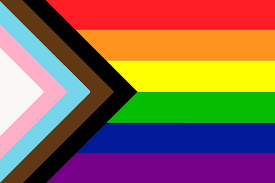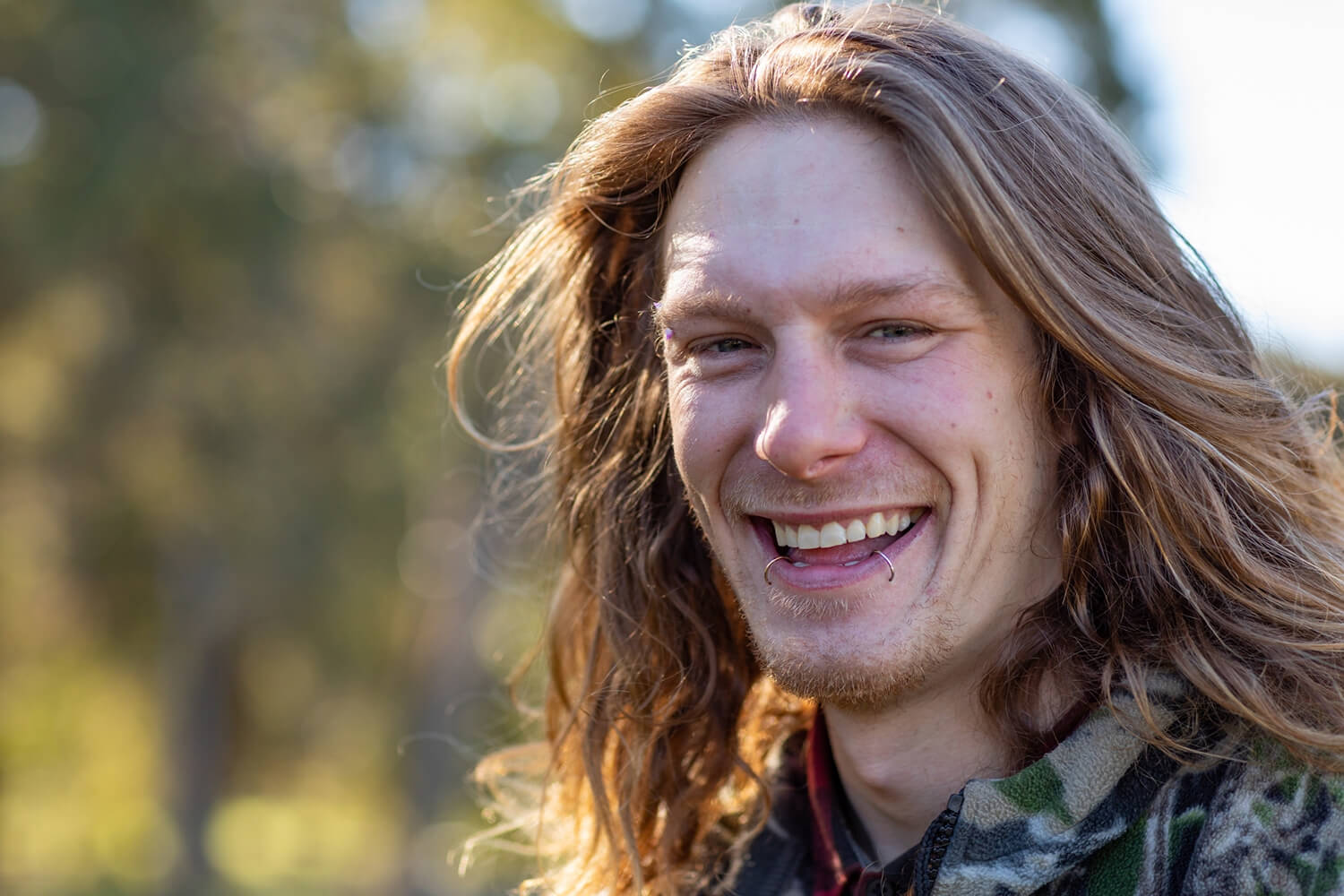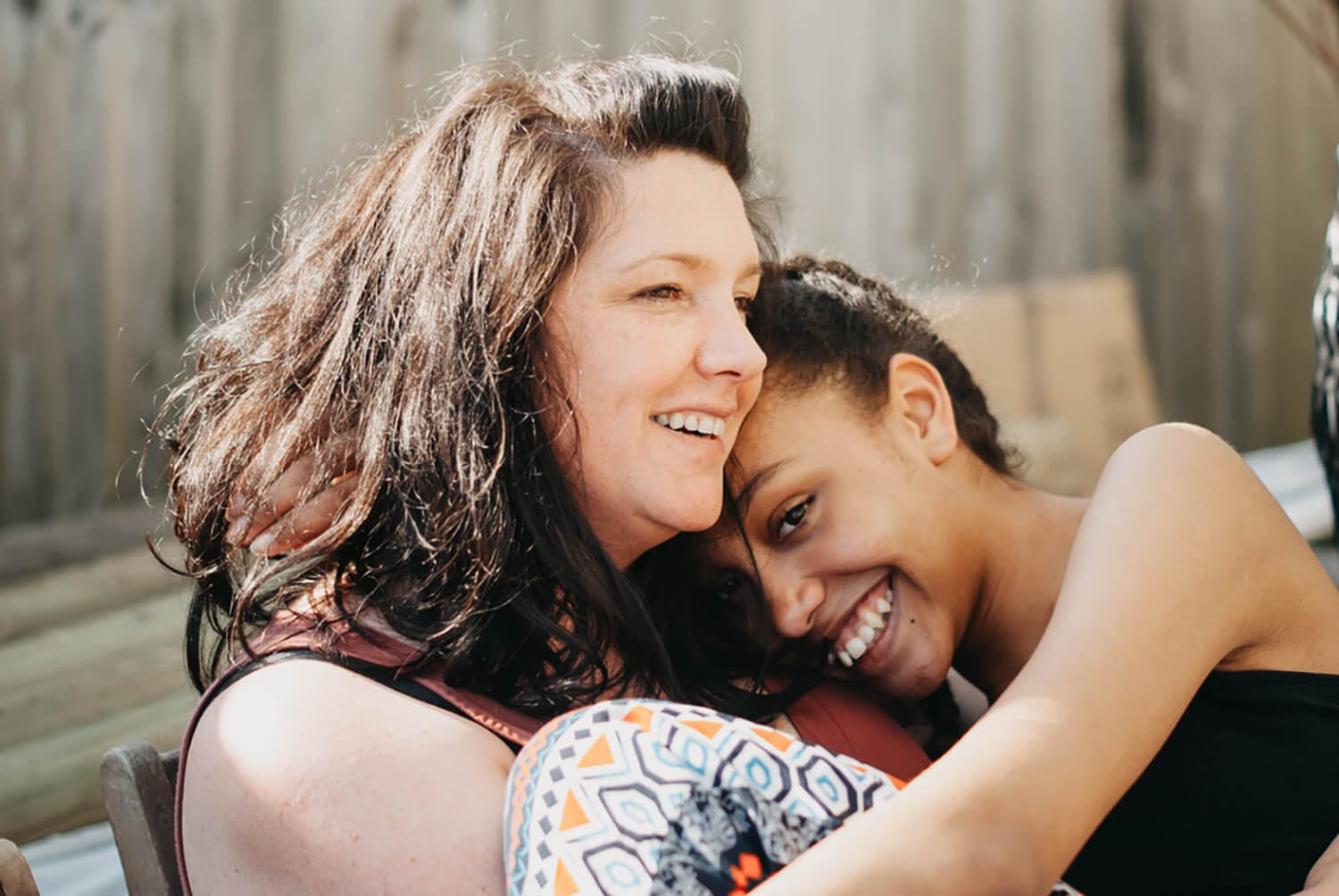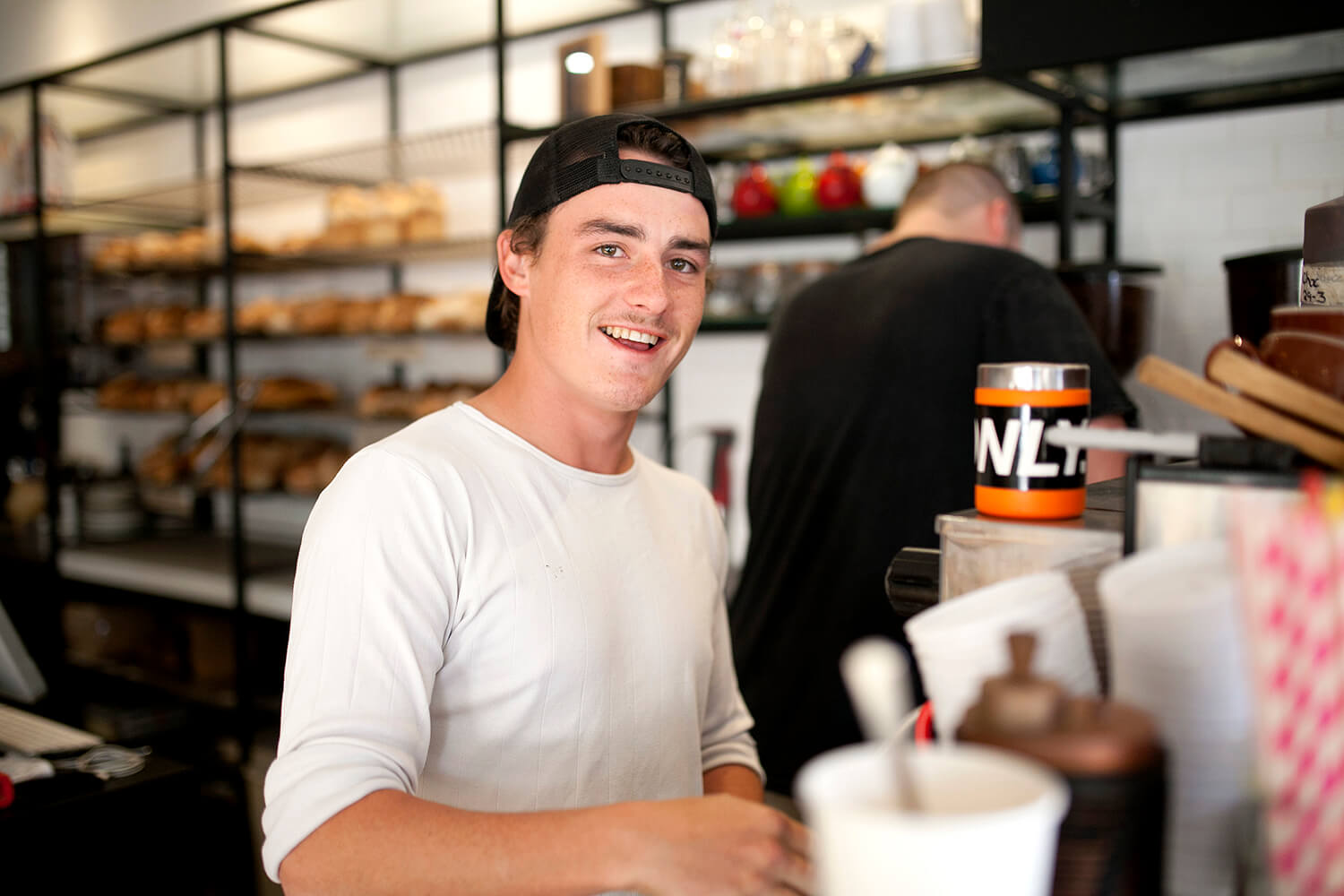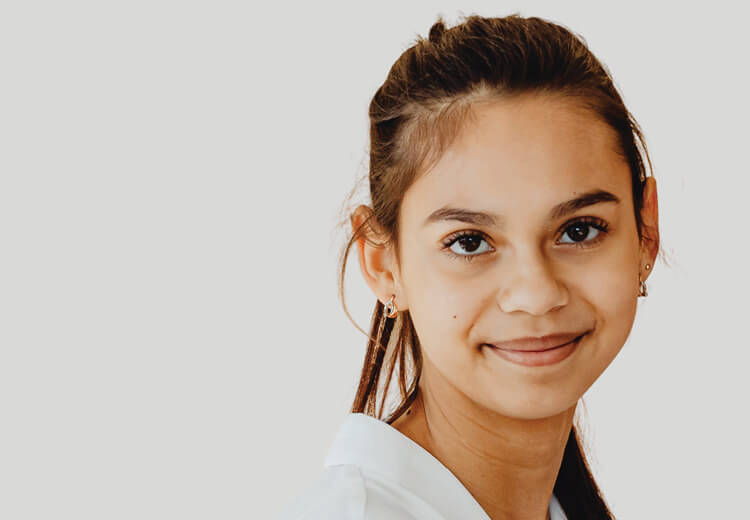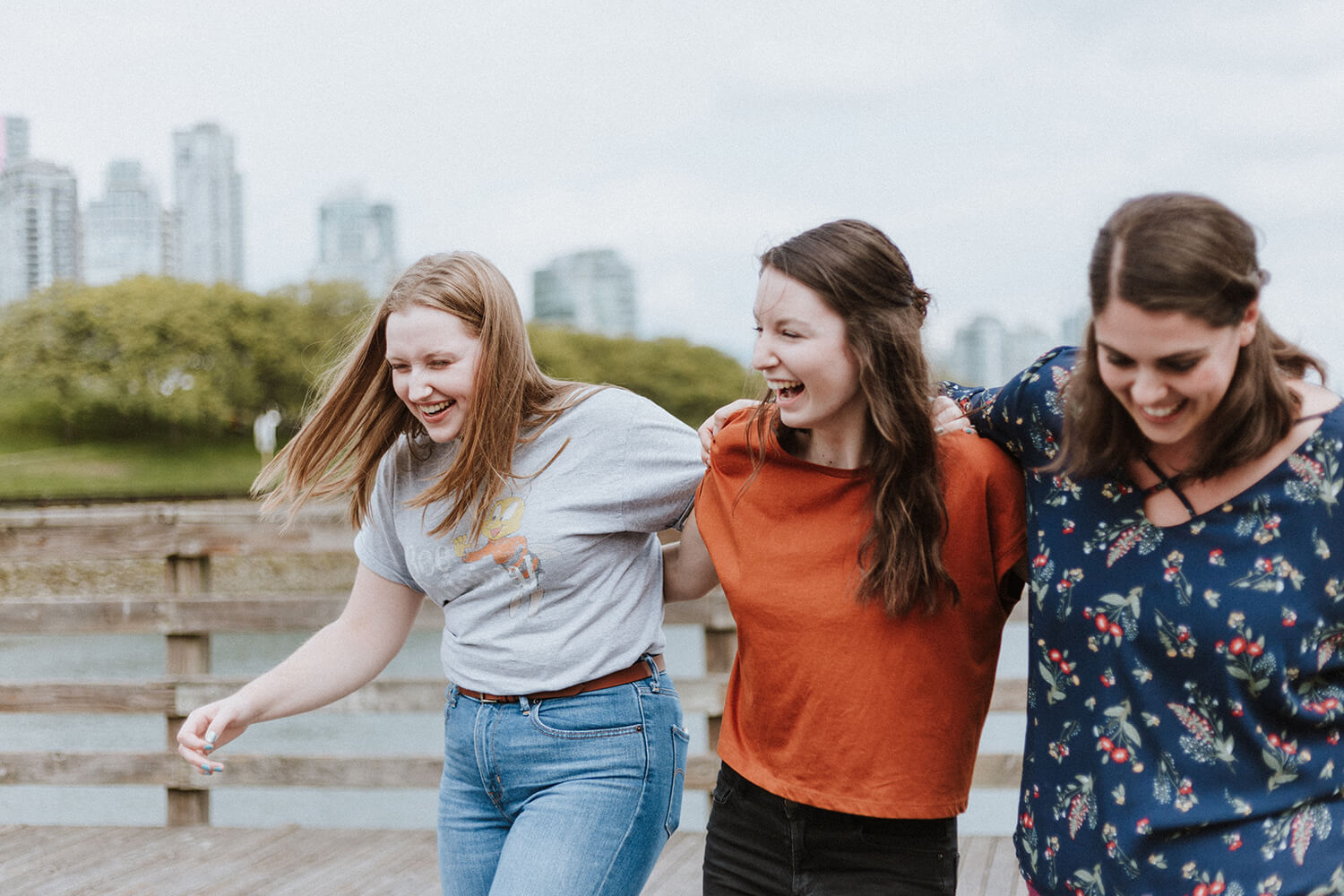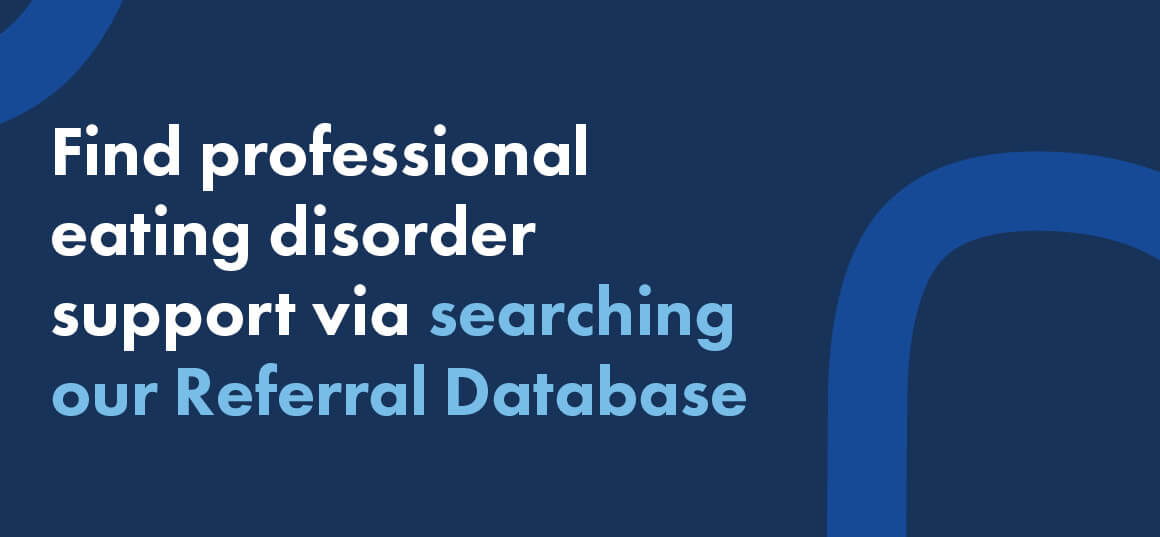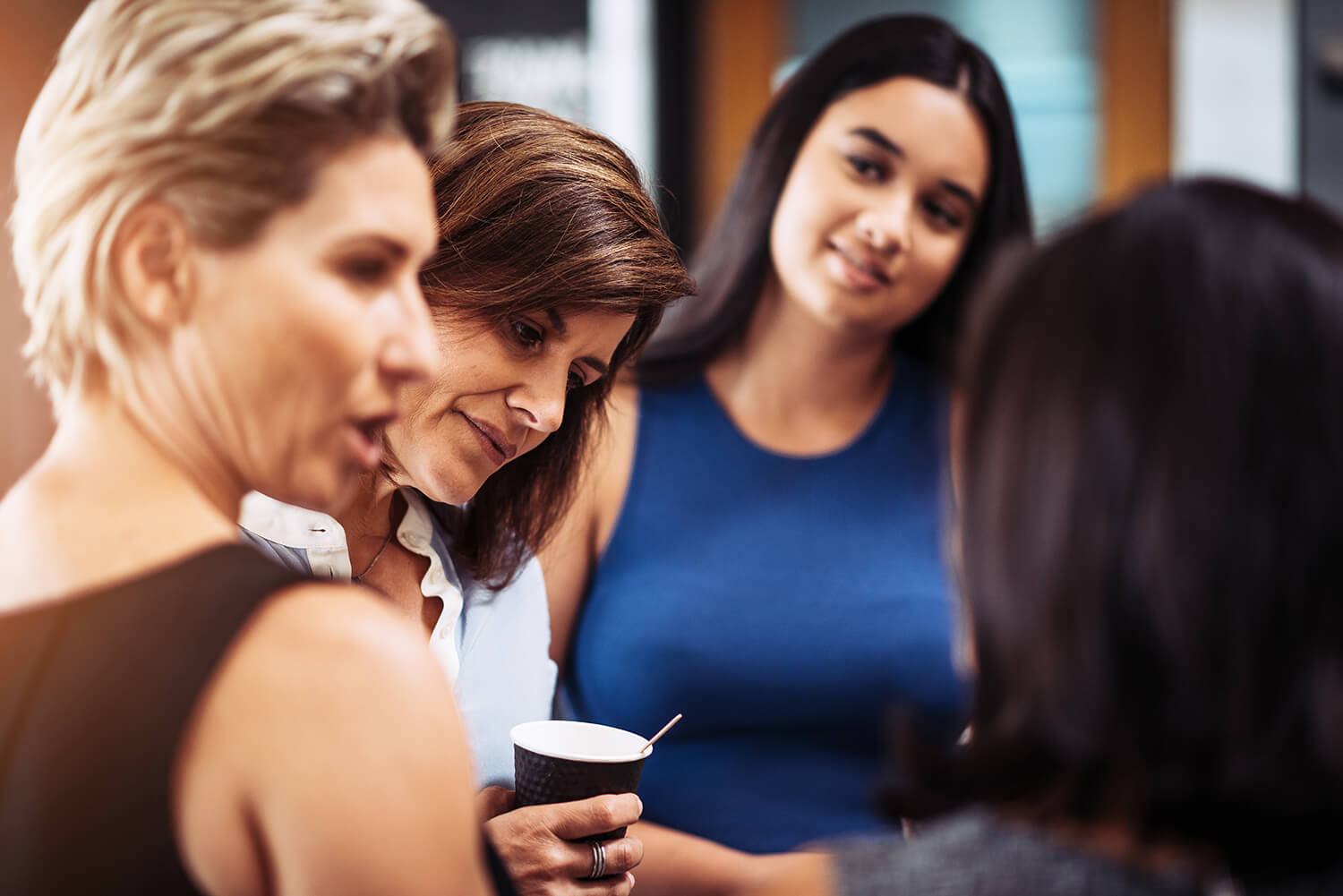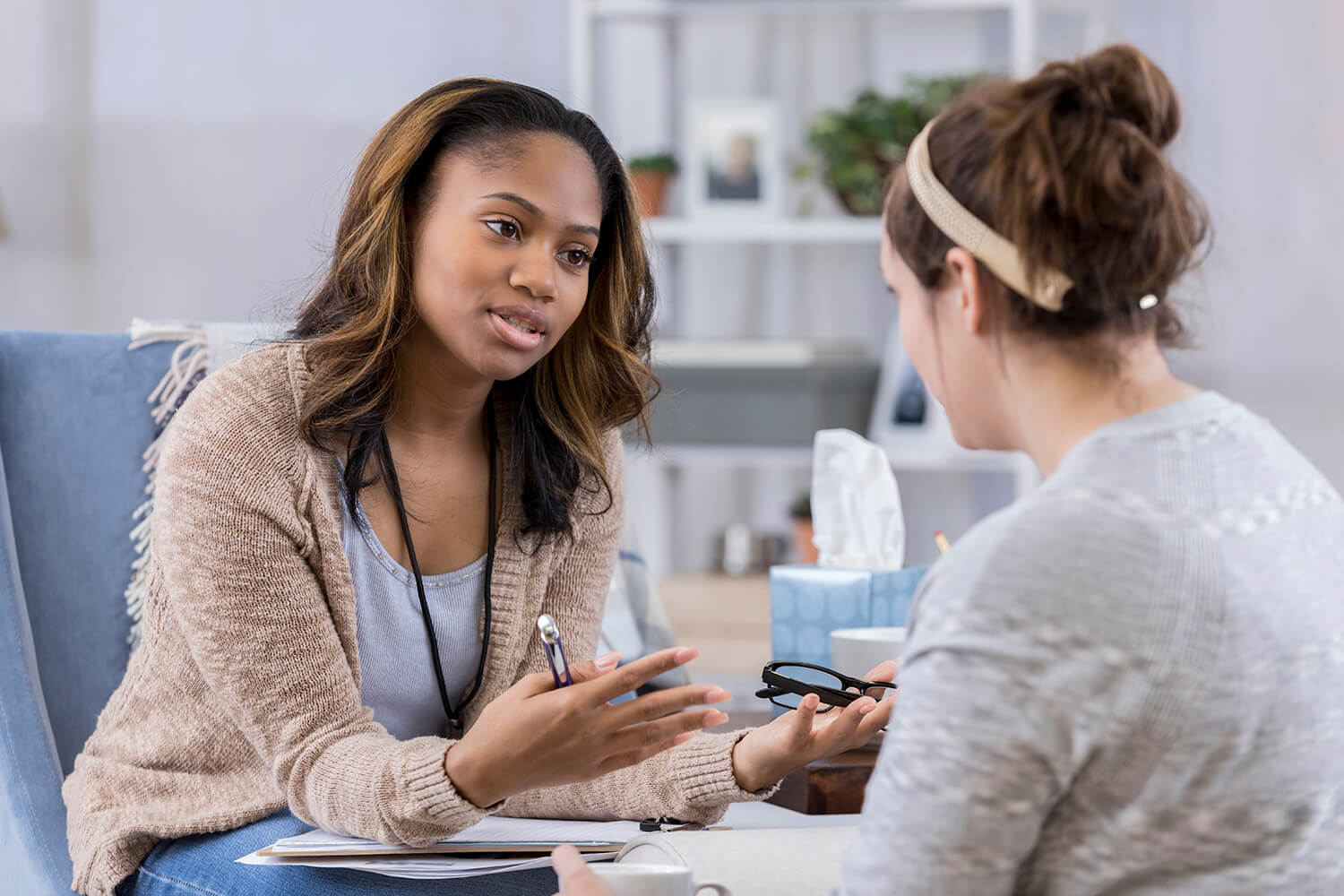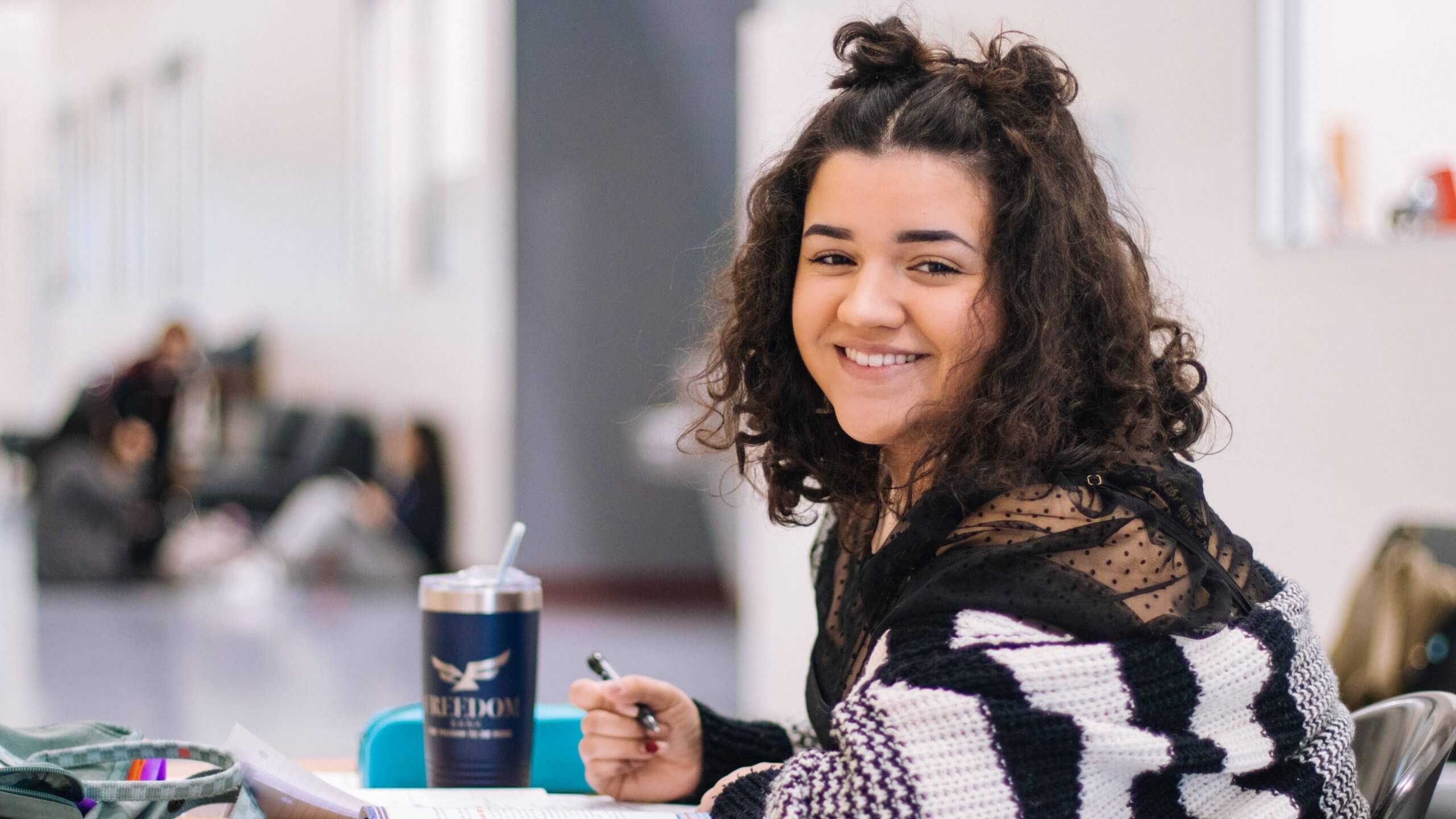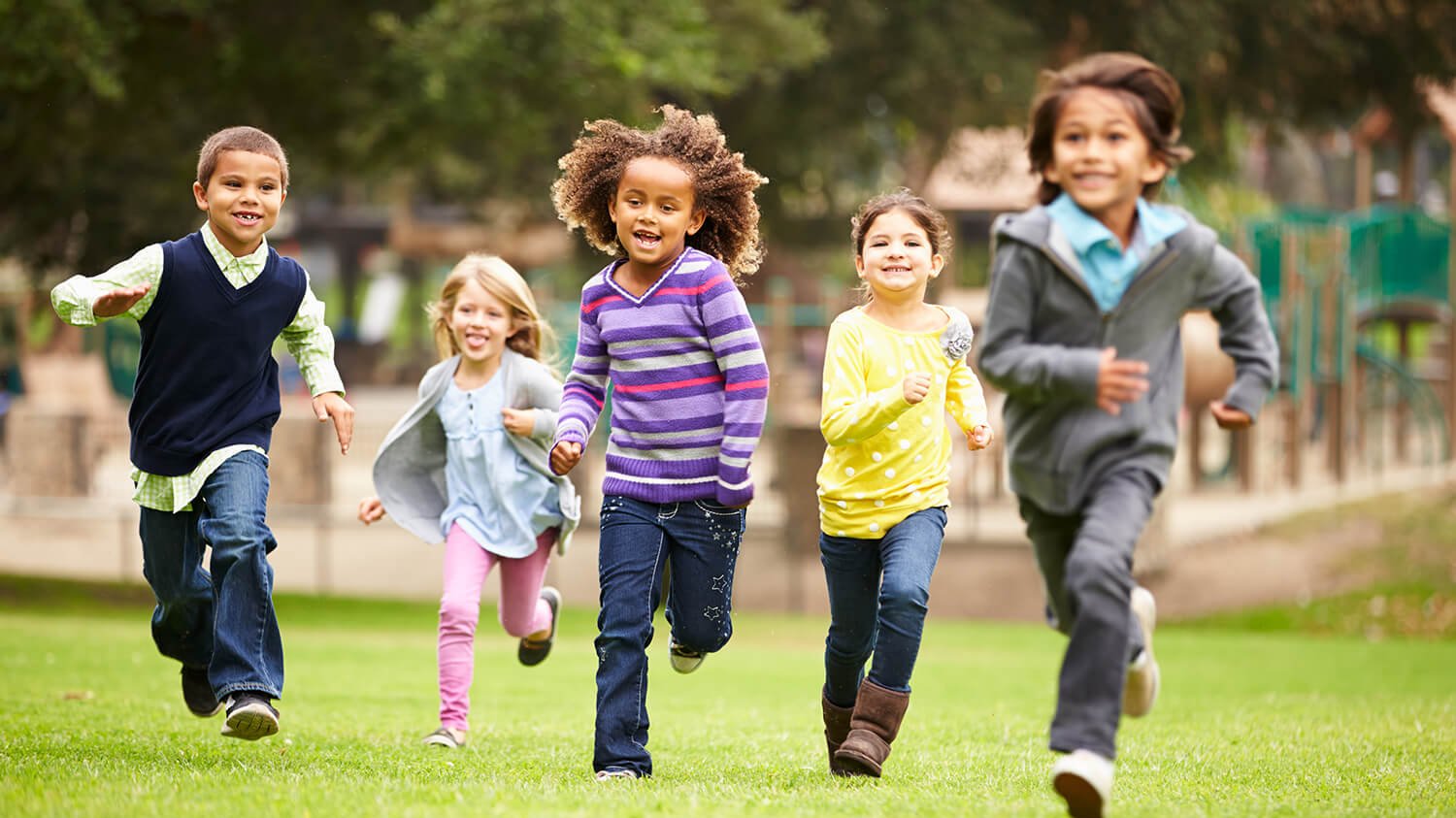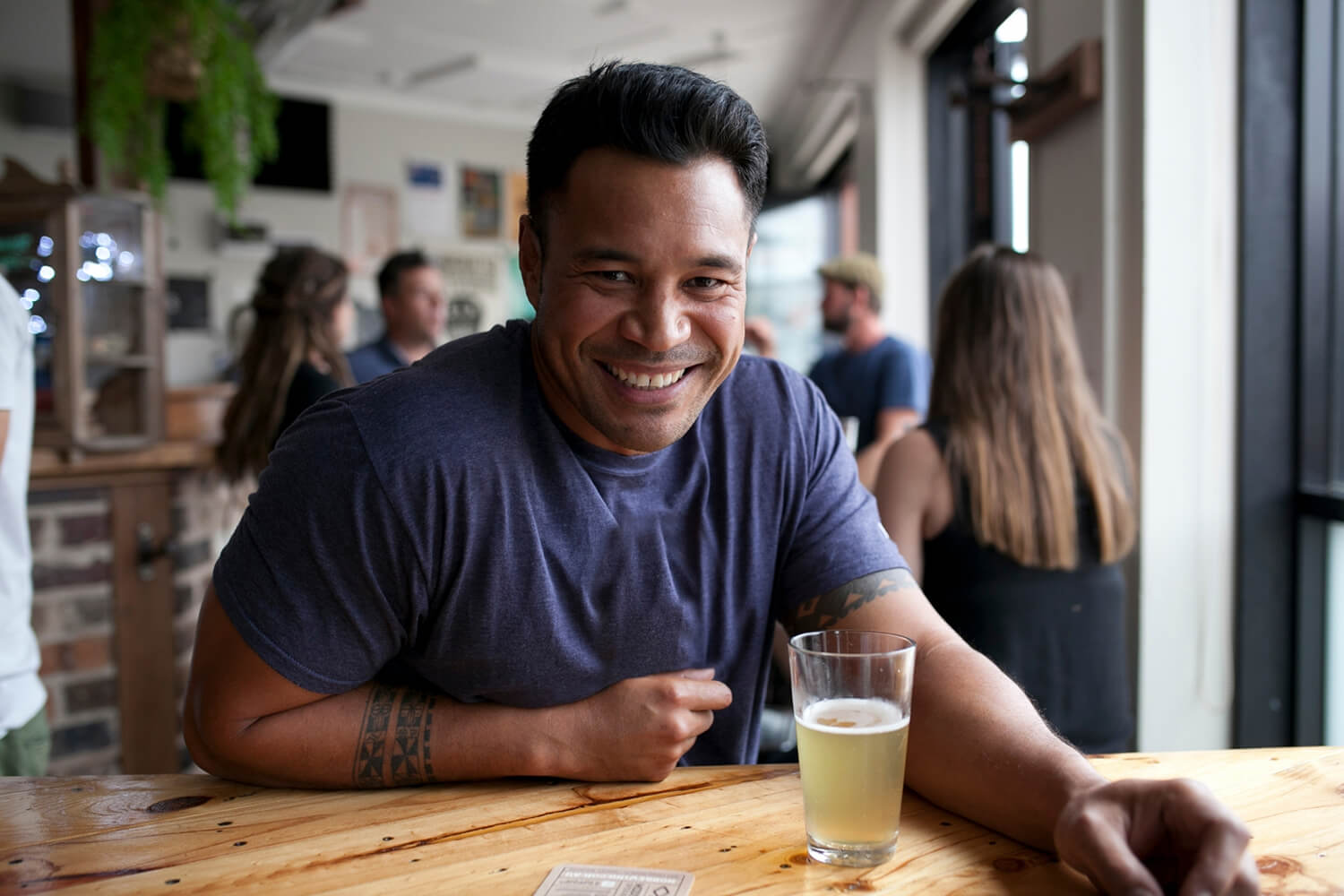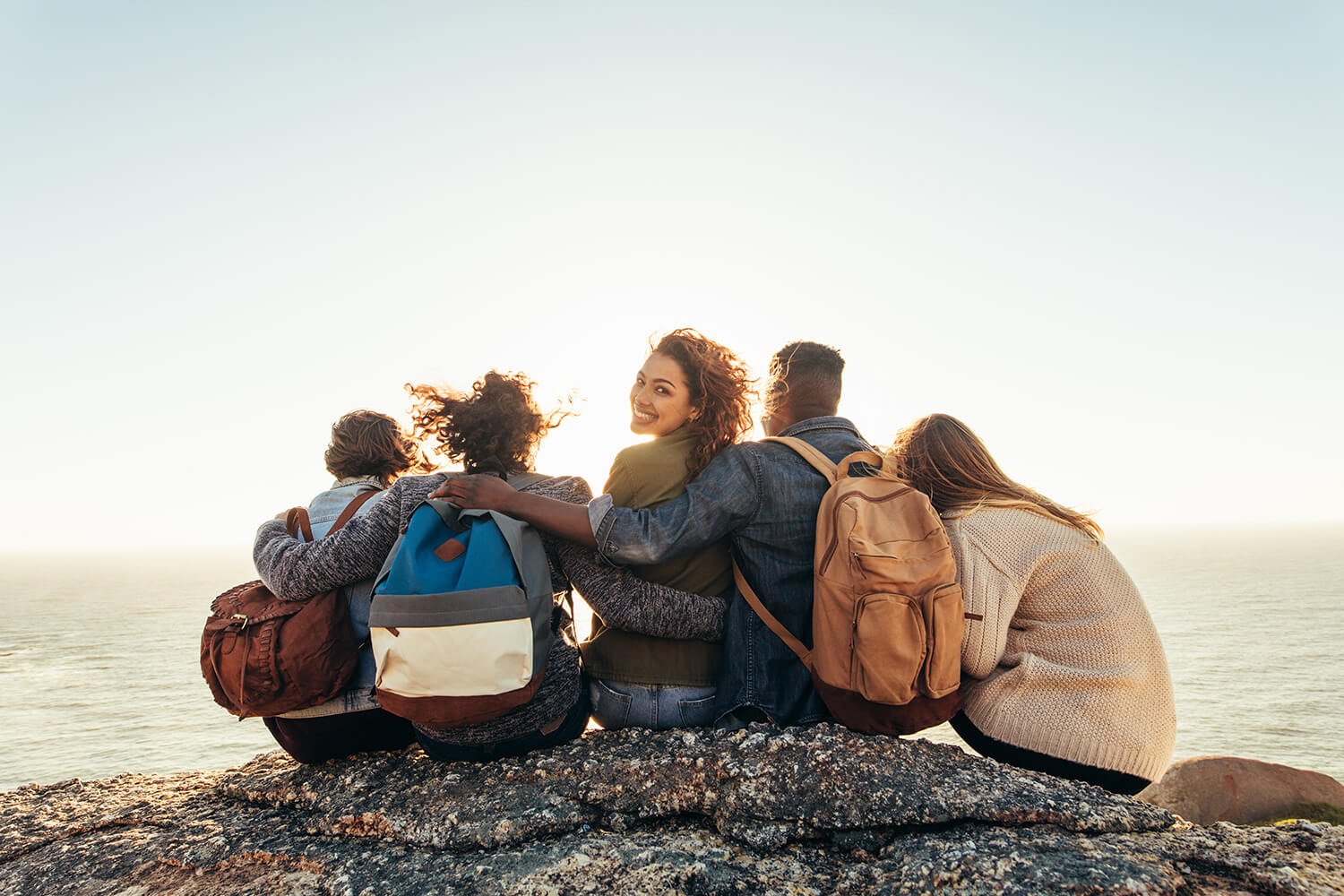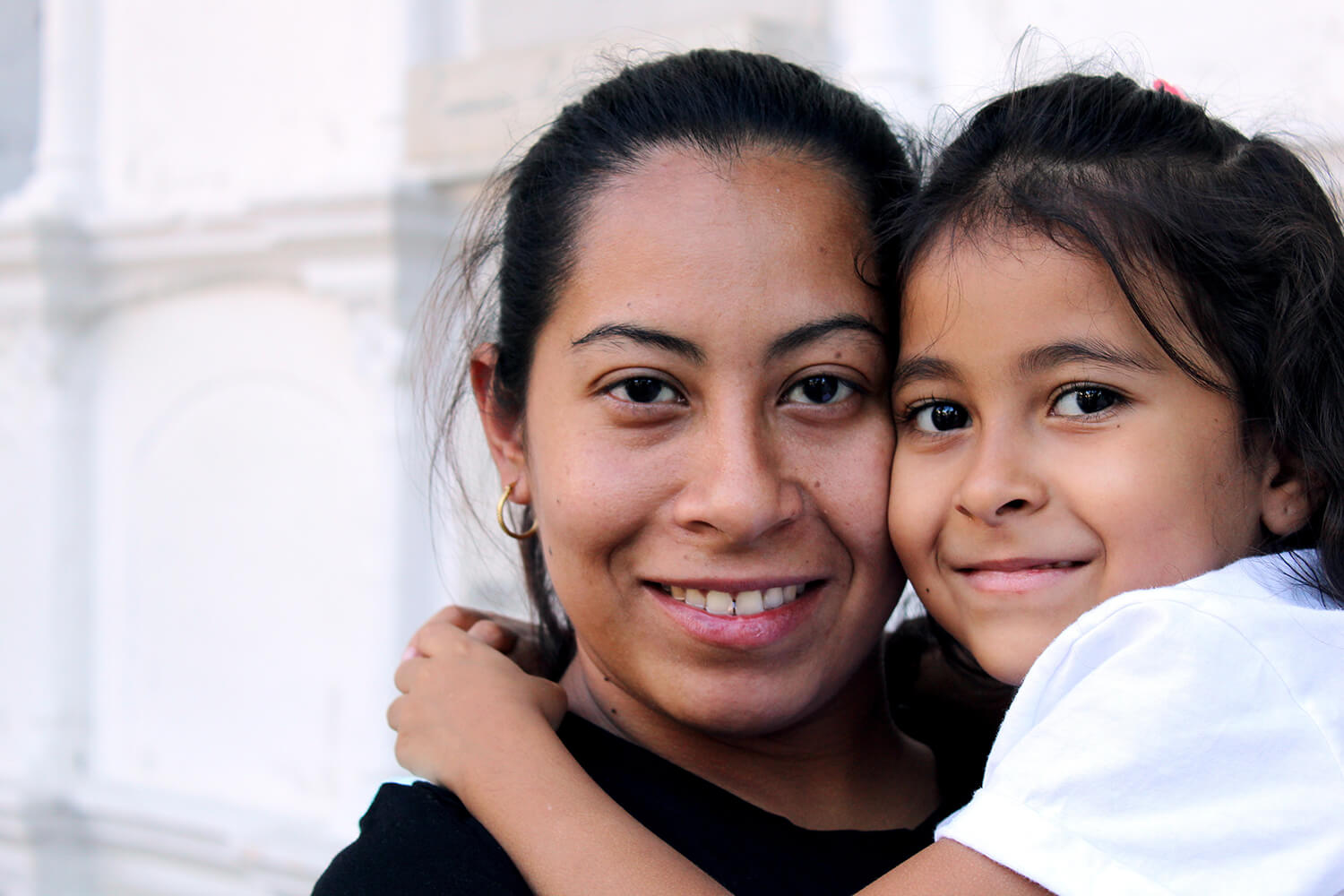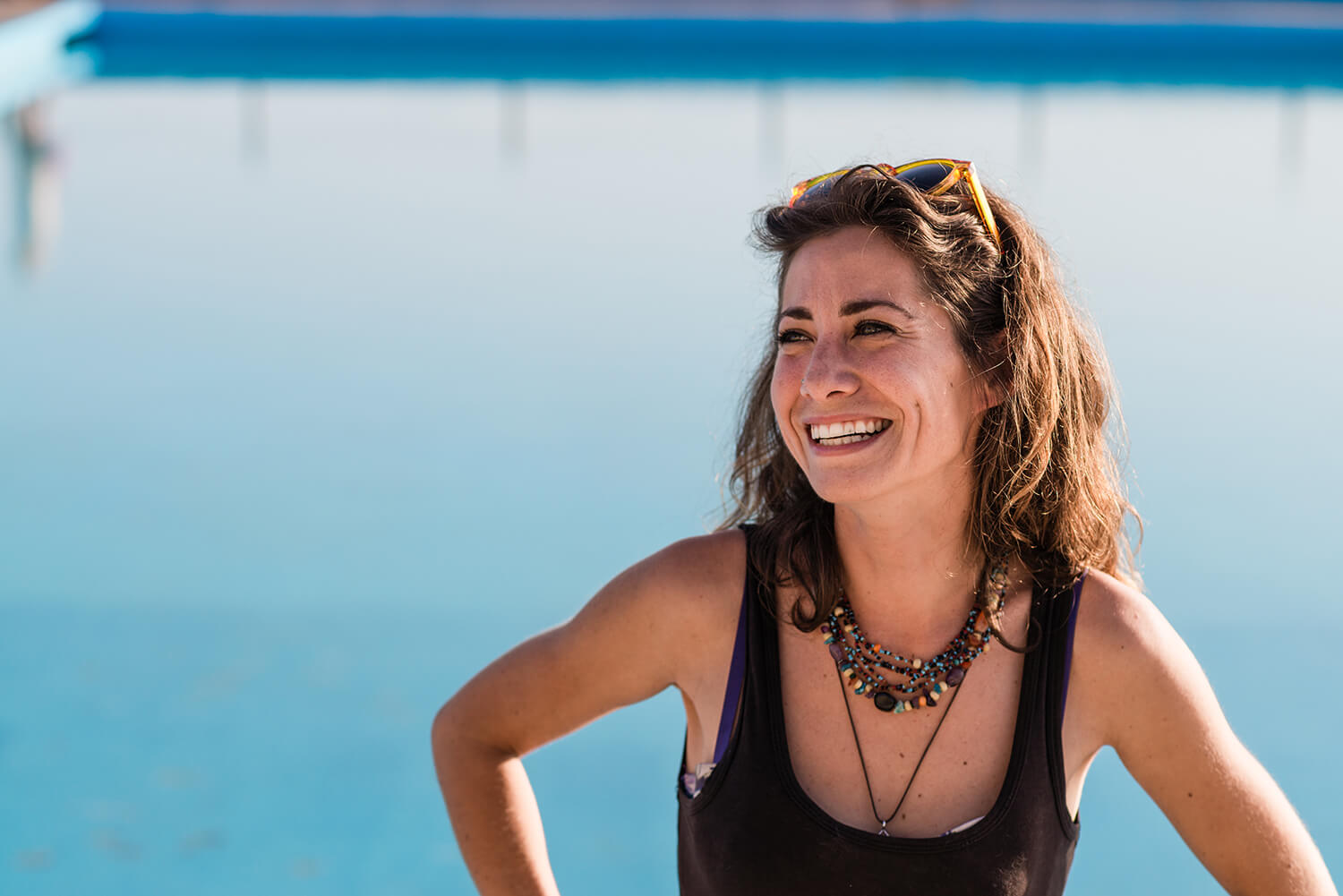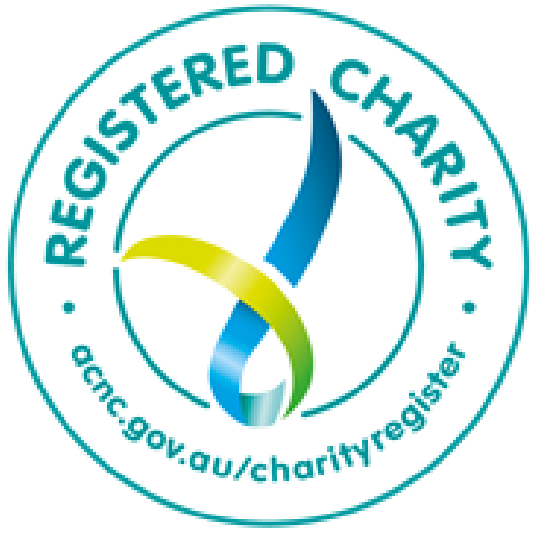Let’s Yarn: Eating and body issues amongst mob
Aboriginal and Torres Strait Islander people experience body dissatisfaction and eating disorders as much as everyone else. But there are risk factors that are unique to this community, along with unique pathways to recovery.
Garra is a proud Waridjuri, Kamilaroi, Bundjulung and Yuin woman and experienced an eating disorder after moving from Country to Sydney. Hear how she’s learned to resist Western ideals of beauty and to express her own style.
Felicia is a proud Kamilaroi and Dhunghutti sister-girl who is also a well-known performer. For years she struggled with expectations of how her body should look—until she realised it was just like her ancestors’.
AJ is a proud Wiradjuri and Wotjobulak man. He was bullied as a teenager and says this contributed to his eating disorder which went undiagnosed because he is male. Today AJ works as a cultural mentor as well as in mental health first aid.
Aboriginal health workers, Liz and Jed, explain why culture can be key to recovery for mob. Let’s yarn!
Garigarra Mundine
Yeah, I definitely felt there were elements of racism that definitely contributed to my eating disorders. People would make offside comments about being Aboriginal that just the way that I look.
Jed Fraser:
What underpins everything is, is the colonization and racism that has led to a lot of Aboriginal, Torres Strait Islander health issues and outcomes.
Felicia Foxx:
I am this tall, slim straight up and down figure. And I always used to feel out of place because I am this little skinny, size eight or size six person. Looking back at my ancestors and seeing the way that they were built back then, pre-colonization, it made me proud that I still look like my ancestors. I still have the same figure.
Liz Dale:
It all stems to our culture. One of our greatest strengths is our culture. The culture is diverse, it is beautiful, and it is rich. And it is the place where we draw our identity from.
Sam Ikin:
This is the butterfly podcast from your friends at Butterfly, Australia’s national voice for body image issues and eating disorders. I’m Sam Ikin.
Sam Ikin:
In this episode, we’re exploring how these mental health conditions affect Australia’s Aboriginal and Torres Strait Islander communities.
Liz Dale:
Barraba Yitirr Liz, Dhanbaan Worimi Golbaan. My name is Liz, and I’m a proud Worimi woman. I am a psychologist who’s undertaking the clinical endorsement programme. And I have just submitted a PhD. So hopefully soon to be doctor.
Sam Ikin:
As we’ve discussed on the show before, the stereotypical person with an eating disorder is a young, wealthy white woman. But we know how dangerous stereotypes can be. As certain to be Dr. Elizabeth Dale tells us, anyone from any mob can have eating or body image concerns. It’s not just white Australians.
Liz Dale:
It’s only just been in the last year, thanks to new research coming out of the Western Sydney University. Which I was fortunate to be part of that research, that we now have insight into the prevalence rates. And surprisingly, it has shown that our communities experience eating disorders and body image or dissatisfaction concerns at similar and or higher rates as the mainstream population.
Sam Ikin:
And research from Butterfly and many, many other sources tells us that body image concerns can often lead to eating disorders.
Garigarra Mundine
My name’s Garrigurra Mundine. And I am a Bundjulung, Wiradjuri, Kamilaroi and Yuin woman, originally from Dubbo, New South Wales. Currently living in Canberra, ACT. I’m a public servant come down here for uni. I was raised in Dubbo, New South Wales in my early years up until I was about 11, almost 12. I was very lucky to grow up on my grandfather’s traditional Country. So, I am traditionally from Dubbo, with my family grew up there and I was very close to my relatives there. My cousins were pretty much my brothers and sisters; I’m the youngest of seven. So, we always had a full house and it was just a really great time and place to grow up. I was a very active kid. We all were, I played every single sport there was, so health was never at the forefront of our mind. Well, actually we were quite poor. So, I think for us, it was more just about getting food on the table and into our bellies than nutrition or, weight management or anything like that.
Sam Ikin:
For Garra, moving away from her home in either the big city was a huge change. And the transition from country to city life came with some challenges.
Garigarra Mundine
It was definitely when we moved off country, we had to move to Sydney because my parents got jobs there. And I was the youngest one. I went into high school by myself to an all-girls Catholic School, which was a huge shift for me from a public school in Dubbo. And even though I had a very multicultural group of friends, I was the only Aboriginal one.
Garigarra Mundine
There were very few Aboriginal girls at the school and I really noticed a difference in my makeup, my body, makeup to everybody else’s particularly when, I just hit puberty and my body really started to change. And I noticed that my friends could just eat all of these kinds of food and it didn’t make a difference to them. They were still really naturally small, whereas I was just made to be bigger and curvier.
Sam Ikin:
An eating disorder is not a lifestyle choice and it’s not a diet gone wrong. In fact, for many of us, it’s a really complex mental condition.
Liz Dale:
Aboriginal mental health concerns are quite complex, and that stems from the intergenerational trauma, and the socio-economic political and linguistic disadvantages that stem from colonisation. So colonisation continues to have an impact in our health and wellbeing, and that feeds into systems of care, and it creates a range of access, and engagement barriers for us to access appropriate treatment, and care in the ways that mainstream populations are able to.
Garigarra Mundine
It’s definitely a big element being away from country. Particularly with my second time I had an eating disorder later in life in at university. My mother had been diagnosed with cancer twice and I’d lost my little sister. All of that and being off Country, living in Canberra, I just felt really alone and disconnected. And I had nothing to connect me back to culture and keep me grounded. And I found that I was turning to food to bring me happiness.
Garigarra Mundine
Dealing with those issues as well. I had a lot of anxiety and definitely depression. It was undiagnosed, but yeah, I attempted to get it diagnosed, but unfortunately, I did not have a very supportive doctor.
Sam Ikin:
When you reached out for that support. It wasn’t there.
Garigarra Mundine
No, it wasn’t. And, I’d gone to the Aboriginal health services looking for, culturally supportive help. But unfortunately, I got a doctor that was non-Indigenous, and she didn’t quite grasp the importance of the situation and what I was trying to tell her.
Liz Dale:
There are a range of barriers for Aboriginal and Torres Strait Islander peoples to access mental health care services generally. So these can relate to things like unavailability of services or a lack of services in rural and remote regions. The majority of services being provided by mainstream service providers lack cultural competency and cultural sensitivity.
Jed Fraser:
My name’s Jed Fraser. I’m a proud Bidjira and Mandandanji man. I have a family connection to South West Queensland. So I am a Ph.D. candidate with UQ and CSIRO. And my topic is looking at indigenous youth health assessment.
Jed Fraser:
Let’s take a step back and have a look at the history of eating for Aboriginal Torres Strait Islander people. So prior to colonisation, Aboriginal Torres Strait Islander people ate seasonally. They lived off the land, they ate healthily, they moved, they hunted for their food and had a very healthy diet. And then from colonisation, particularl, historical policies, and how the social determinants of health play into this, and particularly the social economic status of a lot of communities. For example, to get a healthy piece of cos lettuce, you might be paying $10 a head in a remote community. Where in the city, it might be a dollar or two. And when it comes in to the community, it’s been sitting on a truck for a week.
Sam Ikin:
But deep seated and historical cultural issues, are not the only barriers preventing everybody from getting the care that they need.
Liz Dale:
Other barriers can be cost per treatment, cost for ongoing treatment—so we know that eating disorders require often long-term treatment commitment, which ongoing costs can be an issue for our communities who are already economically disadvantaged.
Felicia Foxx:
My name is Felicia Foxx. I am an Aboriginal entertainer and activist. I’m quite prominent in the drag queen community here in Sydney. And yes, I’ve been performing for about four and a half years. And I’ve been working closely with the Butterfly Foundation since 2018. I’m very proud to be here talking to you.
Felicia Foxx:
I grew up out in Campbelltown and being a first nation person growing up, being connected to culture is very important. It’s a part of who you are and that identity, otherwise you’d just be another statistic to the government or whatever else. But knowing about culture and knowing things about my past and my ancestors have helped me, really come to terms with who I am as a person and who I’m meant to be and where I’m going.
Felicia Foxx:
You know, a lot of our elders and a lot of people in our communities don’t see these issues as affecting our mob because our mob haven’t really spoken out about this. So I guess just now I think it’s coming out a lot more nowadays. And a lot of more Aboriginal communities are speaking out on body image issues and, diets and stuff like that. Our life expectancy, an male Aboriginal my life expectancy is the lowest in the world. And I’m hearing that from my Aunty, it sparked an interest in me to go deeper with finding out ways that our bodies are supposed to live, and he way that our bodies are supposed to move on, being first nations people. But, the genocide under the oppression that was colonialism meant the breakdown systems of our bodies, and the breakdown of our diets all happened as well.
Liz Dale:
The limited research evidence also means that there are a lack of culturally appropriate, culturally validated screening and assessment instruments. Aboriginal people in Torres Strait Islanders accessing health care are not necessarily being screened for or assessed for eating disorders. Because with the limited research, it’s not being highlighted as a potential issue. Particularly in people who may not appear as typical eating disordered, i.e., they look undernourished or underweight. The current approaches to treatment are very westernised, and they don’t include culture or Aboriginal and Torres Strait Islander people’s holistic perceptions of health and wellbeing.
Jed Fraser:
And you’ve got things like social media that play a factor. It’s really easy for me to go on to Instagram or other social media and look at these people with their perfect bodies, and all this unrealistic expectations of what, particularly, young people should look like. So there’s a societal sort of conversation needs to happen around body image, and eating disorders and really shift the paradigm using culture as a fundamental principle. That should underpin everything that we do in this space. Particularly as I mentioned, going back to pre-colonization, and how we ate and what we did. It’s really complex all these things that come into play in terms of this.
Felicia Foxx:
When I really got to looking at my statuesque figure, I am this tall, slim, straight up and down figure. And I always used to look at the males in my family that I’m around now. They’re all athletic, very proactive football players and basketball players. So they’re very big and built and muscly, and I always used to feel out of place because I am this little, skinny, thin, size eight or size six person. So I guess just looking back at my ancestors and seeing the way that they were built back then, pre-colonisation, they were running around, hunting animals and eating from the land, and getting the proper nourishment that our bodies were supposed to be getting, and are supposed to be getting. That really made me come to terms with my body. And it really made me start loving my figure and the way I’m made and built.
Sam Ikin:
Is that because they looked like you.
Felicia Foxx:
Yes, It made me proud that I still look like my ancestors. I still have the same figure, I guess. And I always saw things in social media or saw things on platforms for bigger people, when it came to bigger people being embracive of their appearance. And I never really saw issues of skinny people struggling with the way they looked or speaking out on the way that they felt.
Liz Dale:
It all stems to our culture. One of our greatest strengths is our culture and across Australia, culture is diverse, it is beautiful, and it is rich. And it is the place where we draw our identity from which is so important when we’re talking about all the eating disorders. It’s the anchor upon which we connect to each other. We connect to Country, we have a language to express ourselves and to articulate our needs and to share our strengths and to be creative. It is the source of our health and wellbeing.
Garigarra Mundine
In the past few years, I started really getting into traditional weaving. I reconnected with my aunties back home and they’ve been teaching me all the different traditional weaving styles. And having that here with me in Canberra really connects me back home. And so to have that almost piece of culture in my hand has made such a huge difference because whenever I’m feeling anxious or a little bit sad or I can feel myself starting to get into some bad habits, I pick that back up and I can feel my culture and my connection to it. It just puts me in a safe space.
Sam Ikin:
Everyone we spoke to in this episode said a cultural connection was important for their mental health, but not everyone, initially at least, had a direct connection to their traditional culture.
AJ Williams-Tchen:
I’m an Aboriginal man. I grew up not so much connected to culture because I was fostered out and then later adopted. My backgrounds where Wiradjuri and Wotjobulak, so my family come from Dimboola Horsham in Victoria and Dubbo, Wellington area in new South Wales.
Sam Ikin:
This is AJ Williams-Tchen, He works as a cultural mentor and a master mental health first aid instructor.
AJ Williams-Tchen:
Nothing was really talked about within my family. Nothing was taught at school about eating disorders. All I kind of knew was the typical kind of eating disorder like anorexia, because most times people think they can notice it, but nothing was actually talked about. And I think that’s why it was never picked up early.
AJ Williams-Tchen:
I love dancing, I actually did dancing for a number of years. And so I was always sort of body conscious to start off with, but I also was at a school where there was lots of bullying. I seem to be a brunt of a lot of the bullying that was going on. The fact that I did dancing, the fact that I was an Aboriginal kid, the fact that I had grown up in foster care and then adopted. So there was a lot of things that people wanted to pick on me about. And I didn’t know actually how to cope with all the bullying that was actually going on.
AJ Williams-Tchen:
People knew that there was something wrong. Because I was passing out a lot, the interesting thing in all of this is that I remained the same white throughout the whole process. I would spend about once a week or once a fortnight, just passing out on the way to school, on the bus, I already had enough attention from kids. They weren’t passing out. But again, everyone was responding to it as some sort of medical issue. So I kind of had ECGs and MRIs to try to work out what was actually happening. But I started to understand it myself, that this was something that I could no longer control.
AJ Williams-Tchen:
I was in year 10 at school. And I was in science, sitting on those stools, in the science lab. And I kind of looked down from the stool and all of a sudden, the whole room kind of spun. And I fell and I passed out in the science lab. They called an ambulance because they weren’t able to wake me up. And then I have memories of being in the ambulance. And I realized that one of my teachers were in the ambulance with me. And she kind of mentioned to the paramedics that I do think AJ might actually have an eating disorder.
Sam Ikin:
The experience of an eating disorder can be very different for different people and they present differently, which is why some people go undiagnosed for so long. But regardless of how it presents body image issues and eating disorders can weaken not just body, but mind and spirit as well.
AJ Williams-Tchen:
How could I have an eating disorder when I wasn’t eating?
AJ Williams-Tchen:
I don’t remember much more of the trip, but what it must’ve done is triggered the paramedics to actually pass that information onto the hospital staff. Because for the first time when I was at the hospital, the conversations changed. They were talking to me about my stress levels, they are talking a bit about what are some things that are actually happening in my family. What are some things that are actually happening within the school? I was kind of reluctant initially to talk about any of the issues, but then slowly, I kind of realized that they are actually treating me a lot differently. I don’t actually have an IV in my arm and I don’t actually have to have all these tests and they weren’t taking my blood for the first time. I think they started seeing what was actually happening to me. It’s not a physical thing, but more of a mental health related issue. And this is where I could start to then get some help.
Sam Ikin:
AJ was lucky enough to find the right treatment eventually, but for people who live in rural and remote areas, finding the right treatment can be very difficult.
Jed Fraser:
Some of these communities, they don’t have any economic stability that have, there’s very little employment and there’s very little access to health services. However, there’s the other side of things as well, where people don’t want to go from the lands and lose that connection to Country. So this whole interesting dynamic comes into play, but there needs to be more done in terms of what’s historically happened in Australia. And in terms of the contemporary issues, some of our rural and remote communities have third world conditions, and obviously that’s going to affect health outcomes. I know there’s a lot of different organisations and policies and strategies going on around the moment. There’s obviously the Close the Gap reform, that has all these new indicators, particularly around some of the social determinants of health. But what underpins everything is colonisation and racism that has led to a lot of Aboriginal Torres Strait Islander health issues and outcomes.
Liz Dale:
We are missing a positive presence where we’re underrepresented, we’re often negatively portrayed. And when images of Aboriginal and Torres Strait Islander peoples are used in the media, it’s often stereotypical. By that I mean, dark skin, dark eyes, darker hair, which for fair skinned, Indigenous people, fair-skinned Aboriginal and Torres Strait Islander peoples, can perpetuate body image concerns by feeling as though they don’t look like the typical traditional Aboriginal person.
Garigarra Mundine
I’ve definitely learned over these years that, it’s a topic that you really need to talk about. You can try and be as strong as you want, but it’s just going to eat away at you on the inside, and it’s going to come out in one way or another, physically or mentally. You’ve really got to talk about it and get it out there because you’re never going to get better until you start to talk about it. And you also need to build strong support systems around you.
AJ Williams-Tchen:
It’s only in the last 15 years that it’s kind of been recognised that actually males actually do have eating disorders as well. Even after my experiences, it was still a number of years before the society kind of recognized do males actually having disorders. Other barriers included that I don’t think my family had a really good understanding of what was actually happening as well.
Sam Ikin:
Yeah.
AJ Williams-Tchen:
I think their major response was, well, if you just ate, there wouldn’t be a problem. Or if you just stopped vomiting, there wouldn’t be a problem. So that was more of just stop doing this. I wish I actually had a male to talk to that actually had an eating disorder in the past. Even in the hospital, in therapy, all my peers at the time were all female. All the nurses that I worked with were mainly female as well.
AJ Williams-Tchen:
Everyone kept saying to me, this is very unusual. I’ve never worked with many males before. And even those comments were kind of telling me that I’m not normal. And I don’t think they realized that at the time. They were telling me that I was not normal because statistically, more women were diagnosed with eating disorders at the time. All the literature was around females. I just wanted someone to actually go for what you’re experiencing, this is quite normal for an eating disorder. But I was always told that I was not normal and my behaviours weren’t normal. It became a huge barrier as well for me actually seeking help because I didn’t know what was normal.
Sam Ikin:
One of the most basic things that we keep saying all the time, is that talking helps. Reaching out to talk about it with friends, family, mob, or the Butterfly Helpline can help. Butterfly service is free and confidential. And the counselors have ongoing cultural safety training.
Liz Dale:
Don’t tackle it alone. There’s no shame in talking about it and for community and for service providers, let’s tackle these issues together. Let’s come together and draw from our culture so that we can obtain a better understanding of body image issues and eating disorders within our communities and how they’re affecting our communities. Let us also work collaboratively with mainstream services so that we can test if their knowledge about body image and eating disorders is helpful for us or not. And we can share with them our approaches to recovery so that we can build an inclusive and complimentary evidence-base that’s going to really provide support for anybody experiencing an eating disorder, because we know that eating disorders don’t discriminate against race, culture, gender, they affect us all. Let’s unite to tackle the challenges together.
Jed Fraser:
I think it’s great that this conversation’s happening. And if there’s any Aboriginal or any Aboriginal Torres Strait Islander people, or anyone in general that struggling with body image, or eating disorders reach out and to the Butterfly Foundation, or your local Aboriginal Community Controlled Health organization to get help. Because, all of the time, other people will be on that journey. Yeah, you’re not alone. And I think it’s, moving away from that shame and stigma around this sort of thing, and having these conversations is a really, really important piece of the puzzle.
Sam Ikin:
If you’re having body image concerns or you’re struggling with food and you need some support, Butterfly is there to help. Firstly, there’s the National Helpline with free, confidential, and culturally safe information and support for anyone struggling with body image or eating disorders, as well as anyone who cares for them. The Butterfly Helpline also provides information, resources and referrals to health professionals. The phone number is 1800 33 4673. You can remember that quite easily. It’s 1800 ED HOPE. Butterfly also encourages you to check out their Every BODY is Deadly campaign on the website, butterfly.org.au. And if you don’t like talking on the phone, you can use web chat or email. The new chat bot KIT is available online 24/7. The Butterfly podcast is an Ikin Media production for Butterfly Foundation.
Sam Ikin:
I’m Sam Ikin. I host, write and produce it with the assistance of Camilla Becket and the Butterfly team. Music is from Cody Martin with additional music from Breakmaster Cylinder. And we’d like to thank our guests soon to be Dr. Elizabeth Dale, Jed Fraser, Garigarra Mundine, Felicia Foxx, and AJ Williams-Tchen. If you’d like to support the Butterfly podcast, the best thing you can do is to share it with someone you think is going to get some value from it. They’ll find it wherever they listen to podcasts.


